Accommodation
Daphne’s Club Hotel Apartments
Taverns – Restaurants
Zafiropoulos / Tel. +30 27470 22221
Gefsi & Oenos / Tel. +30 27470 22185
Magas / Tel. +30 27470 22280
To Steki / Tel. +30 27470 61297
Velina / Tel. +30 27420 71132
To Hani tou Miltiadi / Tel. +30 27420 71426
More
Katogi Strofilia wines
Ladolea Greek premium organic olive oils
Stymfalia cheese and dairy products
Zireia natural spring water
Filoxenia Intercultural-Environmental Organization
In the Shadow of Dourdouvana cooperative
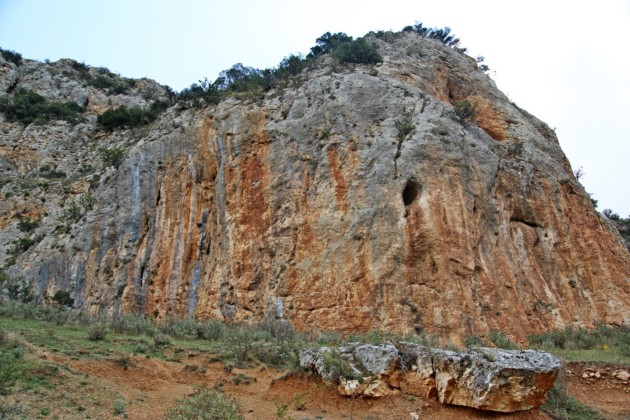
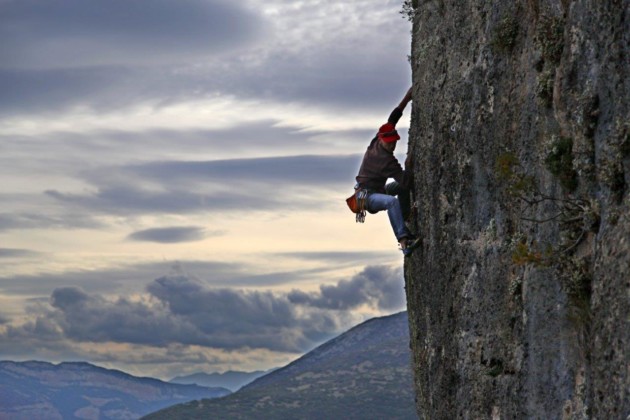

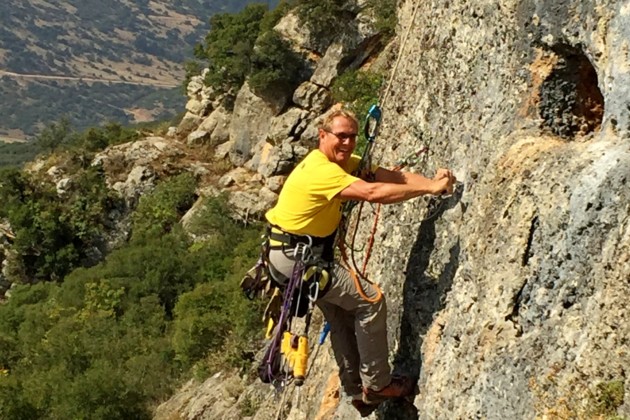
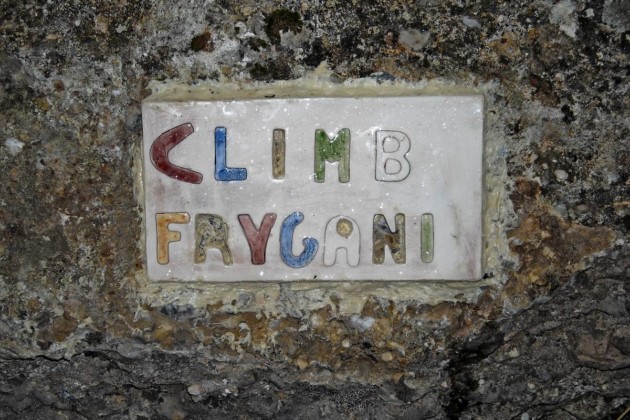

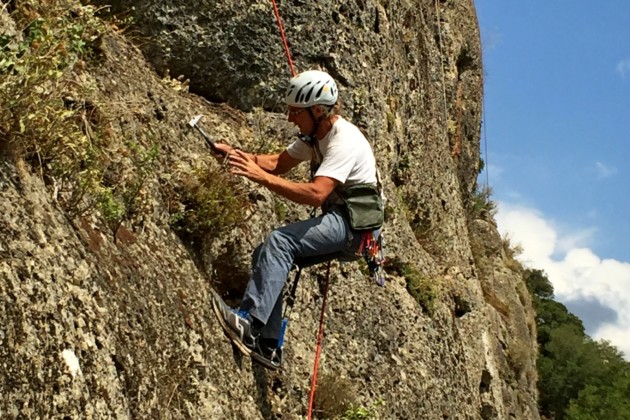

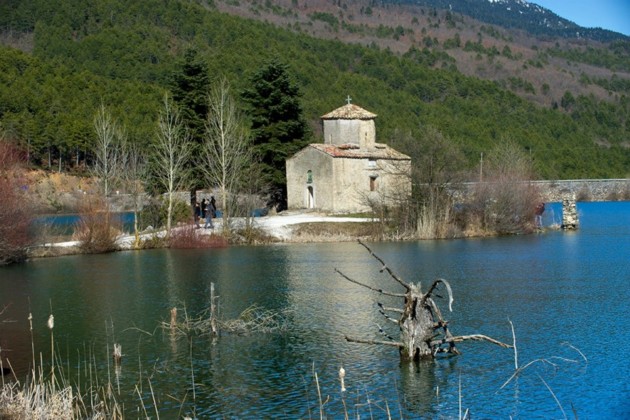
Sector Frygani (FREE-ga-ni) is the latest development in Peloponnese climbing. A long limestone face with conglomerate features, it is located less than 1,5 hours west of Athens, on the eastern foot of Mount Ziria and near the mythical Lake Stymphalia plateau. Sector Frygani consists of two cliffs: the main crag, featuring about 40 routes, and a smaller sector named Mylos, which is just down the road on the opposite side, featuring 10 more harder routes. All routes are fully bolted with stainless steel bolts, hangers, and clippable lower-offs. With an emphasis on easy and mid-grades, routes have been densely bolted to allow climbers to climb safely and to encourage lead climbing and onsight attempts.
Sector Frygani is only 120 fast kilometers from Athens via motorway, so it is a perfect spot to start or end your Peloponnese climbing tour, as well as an ideal spot for a weekend getaway. The rural setting around Frygani is idyllic, the rolling hills covered in vineyards, deep earthy colors and low vegetation. The nearest village, Kefalari, is only 2km away and it doubles as a quiet retreat, with a couple of cozy guesthouses in beautifully restored stone buildings and some no-frills tavernas.
In its previous life in the 1980s, the Frygani cliff was used as a trad multi-pitch crag with a total of 12 routes. (Aris has a special connection with Frygani: He grew up in the nearby town of Xylokastro, and Frygani was one of the few places where he and his friends could practice climbing; it was their adventure playground, so to speak.) As a matter of fact, Frygani was the venue for one of the first climbing meets in Greece (1986), with the participation of nearly 40 climbers, a sizeable number for Greece at the time. Sadly, the crag was abandoned in the decades that followed, though the old trad routes are still there. Some info in Greek about the old routes can be found here. Please remember, though, that the old pitons and slings have been exposed to the elements for thirty years: they are in terrible condition and the vegetation has taken over.
Our future plans do include maintenance on some of the long 150m trad routes and, hopefully, some new long multi-pitches. Stay tuned.
The Rebirth of Sector Frygani
In early 2016, we were contacted by the lovely folks at Experience Corinthia with questions about the potential of developing climbing tourism in the mountains of Corinth. A Q+A meeting between Aris and local individuals and business owners ensued at the Environment Museum of Stymphalia. The local community responded warmly; so warmly, in fact, that they struck while the iron was hot: in a matter of weeks, an ingenious business owner from Kefalari village set up an “adopt-a-route” crowdfunding campaign to get the Frygani project off the ground, in a display of efficiency and community spirit that we have rarely seen in Greece. People were encouraged to fund one or more new routes, and in return they got to name their “adopted” routes (in case you wondered about some of the names, now you know). So successful was this outreach effort that several individuals or small business owners with no immediate benefit were compelled to contribute to the Frygani project. In the words of one such individual, “this is the kind of thing I’d like to see more of in Greece. It’s our only way forward”.
More about the “adopt-a-route” campaign in the “Acknowledgements” section below.
Accommodation
Though most Athens-based climbers will probably make a day trip out of Frygani, the number of routes and things to see in the area definitely warrant a weekend stay. Kefalari, the nearest village at a mere 2km away, is quiet and unpretentious, with some great little boutique hotels and the refuge of EOF (an association of hikers and physiophilists) for large groups. Nearby villages Kryoneri and Kalliani and the neighboring Feneos (about 30km), as well as the seaside towns Vrahati and Xylokastro also feature accommodation options for all budgets.
Rest Day Activities and Points of Interest
Lake Stymphalia: An important bird habitat with a very special museum, the Environment Museum of Stymphalia. Quoting from the museum’s website, “Stymphalia belongs to the European Network of Protected Areas NATURA 2000. Lake Stymphalia and Mount Zireia are of great ecological value. They communicate through underground, as well as visible water routes, defining the aquatic basin of Stymphalia, the largest mountain lake of the Peloponnese. It also constitutes the southernmost mountain wetland of the Balkans, with rich flora and fauna.” And if you get hungry, the roast suckling pig served at the tavernas of Stymphalia is almost as legendary as the Stymphalian Birds.
Nemea: The valley of Nemea is the biggest wine-producing region in Greece and home of the Agiorgitiko grape variety. You can visit many of the large and small wineries in Nemea to taste and buy some exceptional (and vastly underrated) Greek wines. There are also good wineries in the villages Lalioti and Asprokampos.
Feneos: A big plateau between two verdant mountains, Ziria and Helmos, surrounded by nine beautiful stone-built villages. Don’t miss the stunning Lake Doxa, a dreamy setting in the shadow of Mount Dourdouvana.
Xylokastro: A seaside resort town. The highlight of Xylokastro is Pefkias, an impressive pine forest along the beach, with dirt trails ideal for walking or running before or after a swim in the diaphanous waters of the Corinthian Gulf.
Ancient Corinth: The ruins of one of the major powers in antiquity, the city-state of Korinthos, and the 6th century BC Temple of Apollo sit atop a limestone hill with incredible views. Seven of the temple’s thirty-eight columns are still standing.
Acknowledgments
The Frygani project would not have been possible without the help and generosity of an outstanding group of people. Special thanks to everyone at Experience Corinthia for initiating the project; to Mrs. Mina Malakou for being the best, most resourceful fundraiser; to the Sikyona Municipality and the Environment Museum of Stymphalia for their unwavering support; and to 3some Ceramics for the beautiful name plaques. We hope the Frygani project inspires more communities in Greece to come together, and if you do climb in Frygani and visit some of the businesses below, mentioning that you are here to climb will give them great pleasure.
Climbing in Frygani
Sector Frygani was equipped in September/October 2016 by the following group of friends: Dimitris Titopoulos, Dimitra Klaoudatou, Claude Idoux, George Kopalides and Aris Theodoropoulos. Most routes were equipped by the inexhaustible Dimitris/Dimitra duo, whose track record includes dozens of well-bolted and thoroughly cleaned routes in Greece including, most recently, in Kyparissi; Claude travelled here especially from Kalymnos to bolt and clean some additional routes; George Kopa was a rockstar as usual as he cleaned and added finishing touches to the routes, including with a leaf blower; and Aris implemented and oversaw the project while working on a variety of bolting and cleaning tasks as needed.
Bolting: The equippers of sector Frygani all share the philosophy that sport routes should be equipped in a safe and encouraging manner; the majority of climbers should be able to climb without risking ground falls or other preventable injuries, and rock must be cleaned of vegetation, loose rock and edges so sharp that they discourage climbers from coming back. Sector Frygani has been equipped accordingly. It is ideal for new climbers, families, and as a training crag (especially for practicing good footwork technique). For experienced climbers, there are several challenging and beautiful harder routes. For those climbers itching to complain that routes are “tourist-style”, “overly-bolted” or “not real climbing”, we are happy to recommend plenty of runout crags or big faces in the Greek mountains for real climbing, with no extra bolts cramping their style.
Climbing: Frygani is a large limestone and conglomerate vertical wall. It is similar to the legendary Meteora cliffs but, in fact, the rock is significantly more solid and with features in abundance (pockets, holes and flakes). Another important difference: the bolting in Frygani is much denser! Climbing is technical, balancy and varied. All names are written at the base of the routes.
Conditions: Good for year-round climbing. In winter, climb here in the morning. In spring, fall and summer, if it is sunny and hotter than 20C make sure you are in the shade.
Shade: After 15:30 at the main cliff of Frygani. Until 13:30 at sector Mylos.
Exposure: E (Frygani), W (Mylos)
Gear: 60m rope (80m for the extensions); 12 QDs (routes up to 20m), 16 QDs (up to 30m), 22 QDs (up to 40m).
Kids: Frygani is one of the best crags for kids, with minimal walking and some child-friendly terrain nearby. In contrast, Mylos is not very good for kids, as it is rather steep.
Approach: From Athens, take the motorway in the direction of Corinth then Patra. Exit towards Kiato (exit #15) and drive south towards Stymphalia for another 23km. Pass the intersection to Klimenti and Kaisari villages. The main cliff, Frygani, will be further down on the right-hand side of the road. Park on the lane off to the side and walk up the cairn-marked path for 3 minutes. Sector Mylos is a bit further down the road on the other side. Continue past the intersection to Kefalari village, then turn left and drive up to the stone building (the old renovated mill) with the cliff above it. Park next to the building. Walk up the dirt road and path for about 3 minutes. You will come to the right side of the setor. To go to the left side (grey slab), walk along the base of the cliff up and to the left for another 5 minutes.